Harlequin Quail
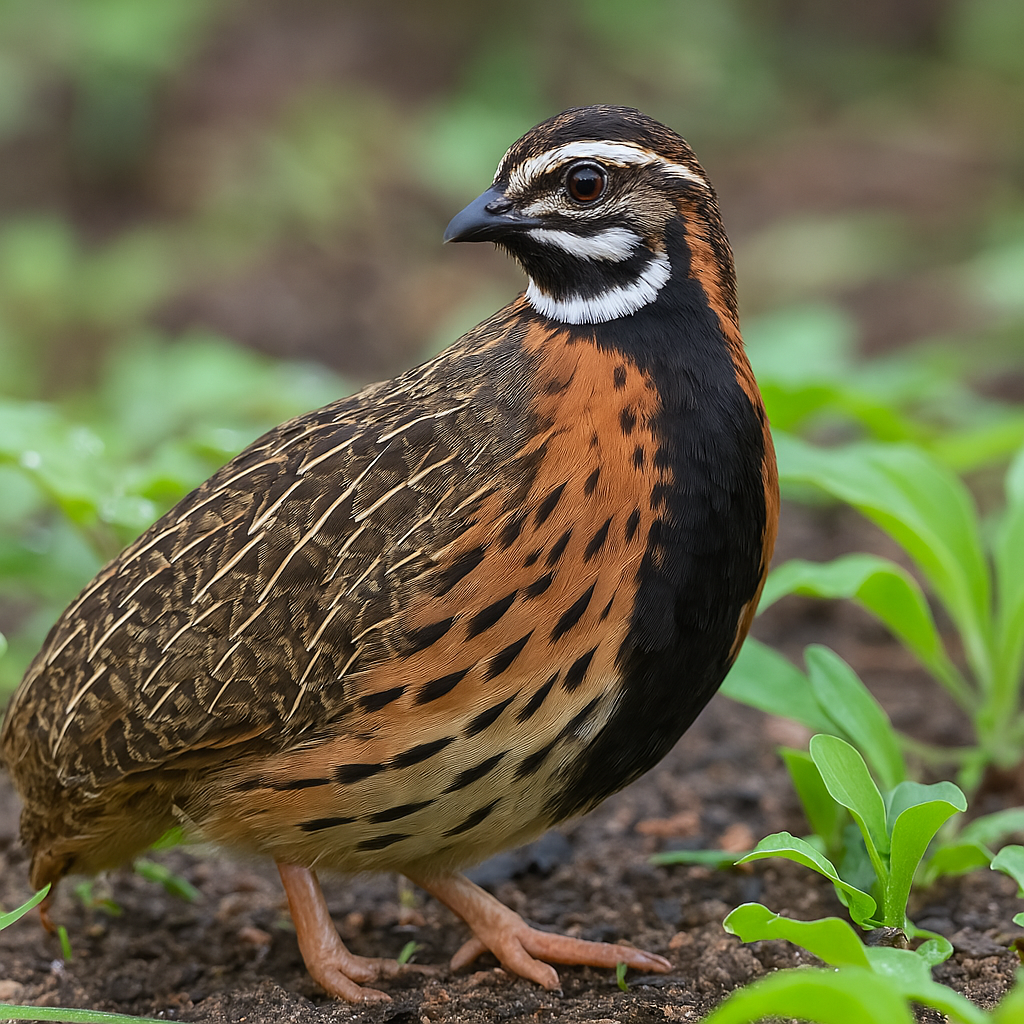
Lifespan
2-4 years
Height
10-13 cm
Length
15-18 cm
Quail Ratio
1 Male to 3-4 Females
The Harlequin Quail, also known as the Harlequin Button Quail (Coturnix delegorguei), is a small, attractive quail species popular among bird enthusiasts. They are known for their striking appearance, with males typically displaying vibrant plumage patterns.
Harlequin Quail Call (Male Call)
Physical Characteristics
How many females to a male
This ratio supports natural social dynamics, reduces the likelihood of male aggression, and ensures that females are not over-mated, fostering a healthy breeding setting.
Size
Harlequin Quails are about 6–7 inches (15–18 cm) in length and 4–5 inches (10–13 cm) in height.
Appearance
Harlequin Quails are characterized by their colorful, patchwork-like feathers. Males often have a mix of bright colors including reds, blues, and greens, making them visually striking. Females are generally more subdued in color but still possess subtle beauty.
Lifespan
Harlequin Quails typically have a lifespan of 2–4 years in captivity. With proper care, including a balanced diet, a clean environment, and regular veterinary check-ups, they can sometimes live longer, reaching up to 5 years or more.
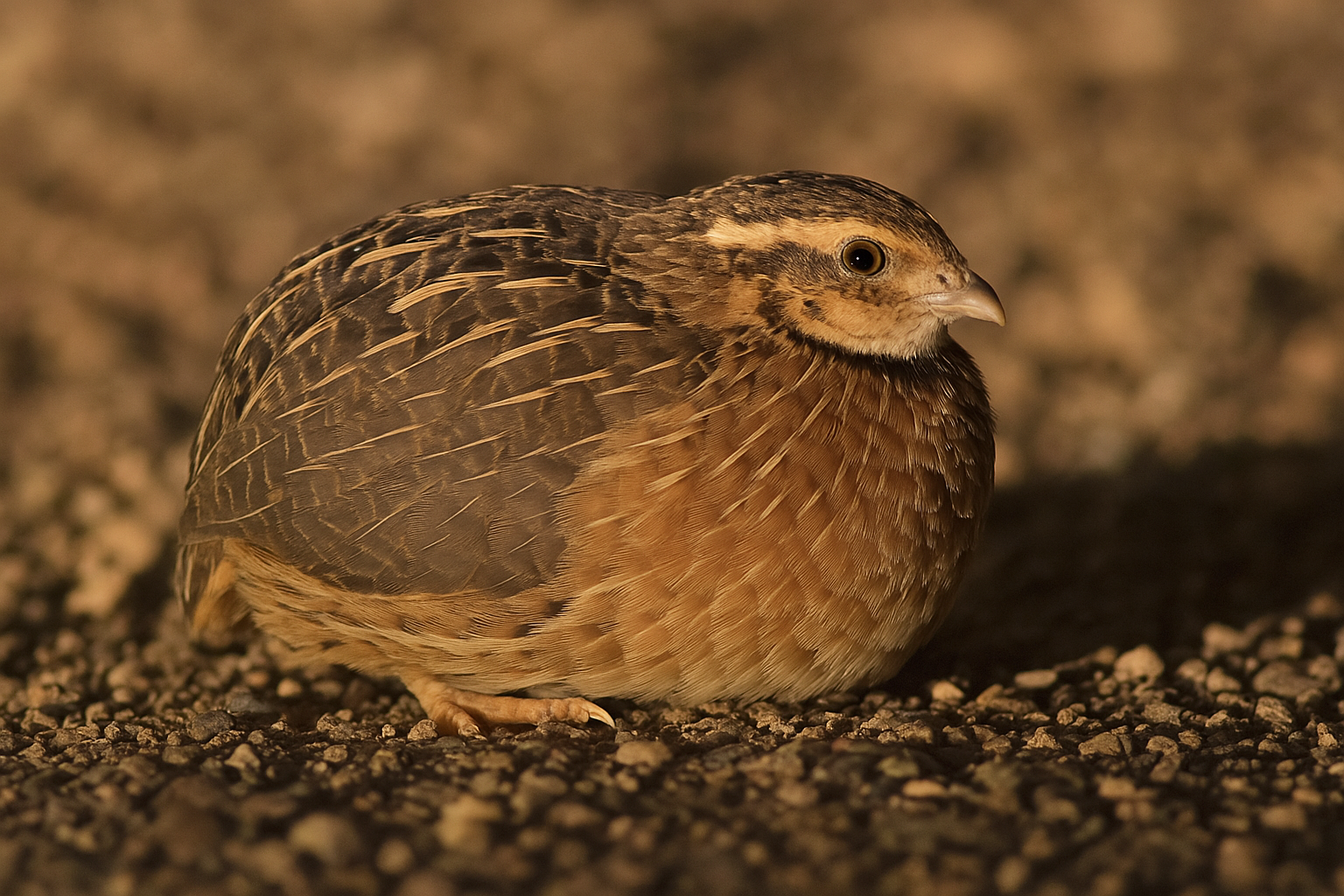
Habitat
Size of habitat
Provide a spacious aviary or large cage with plenty of ground space, as Harlequin Quails prefer to forage and explore. They do well in both indoor and outdoor enclosures.
Substrate
Use soft materials like straw or wood shavings for the floor. Regularly clean and replace the substrate to maintain hygiene and comfort.
Shelter
Ensure the enclosure has sheltered areas to protect them from harsh weather and give them a sense of security.
Dust Bathing
Provide a container of sand or fine dust for dust bathing, which helps keep their feathers clean and free of parasites.
Protection
Ensure the enclosure is secure with fine mesh to prevent escapes and protect from predators. Provide a sheltered area to shield quails from weather extremes.
Diet
Food
Feed Harlequin Quails a balanced diet of high-quality quail feed, supplemented with fresh vegetables, fruits, and occasional insects.
Protein
Their diet can be supplemented with fresh greens, small insects, and grains to mimic their natural foraging behavior.
Water
Ensure they have constant access to clean water.
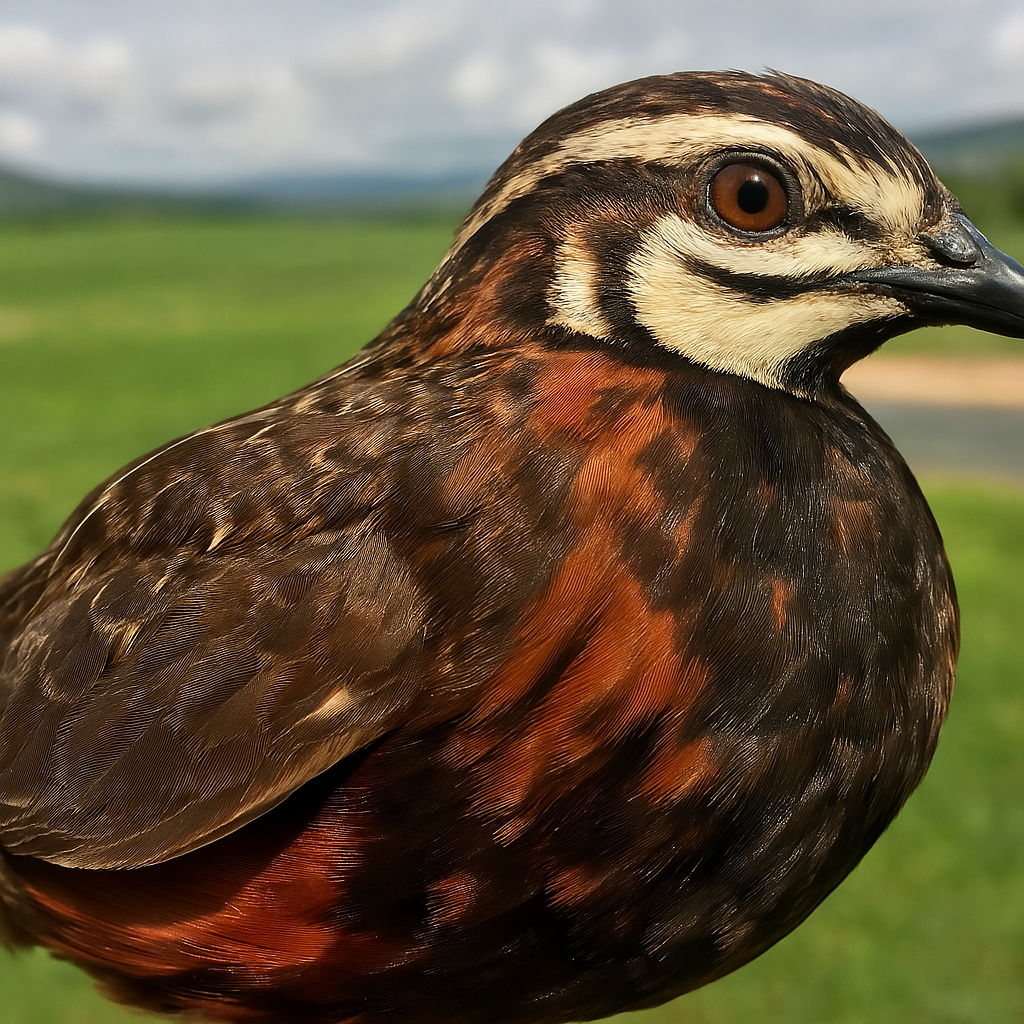
Social Behavior
Harlequin Quails are generally social birds but may display territorial behavior, especially during the breeding season. It's recommended to house them in pairs or small groups, with attention to their interactions to avoid conflicts.
Activity
Harlequin Quails are naturally active birds that enjoy foraging, scratching the ground, and exploring their surroundings.
Handling
When it comes to handling, Harlequin Quails tend to be skittish and prefer minimal human contact. They may become somewhat accustomed to their caregivers over time, but they are best enjoyed for their visual appeal and lively nature rather than as birds for frequent handling.
Health
Clean Environment
Maintaining a clean environment is key to their health.
Health Monitoring
Regular monitoring for signs of illness, such as lethargy or changes in eating habits, is important. Parasite prevention and regular veterinary checkups are recommended.
History
The Harlequin Quail (Coturnix delegorguei) originates from sub-Saharan Africa and parts of the Indian subcontinent. Historically, these birds have been known for their seasonal migrations, moving in response to rainfall patterns. They have been part of local cultures and are traditionally hunted for food.
Modern Interest
Despite their historical role as game birds, Harlequin Quails are less commonly kept as pets compared to other quail species. Their striking appearance and adaptability make them intriguing for aviculturists, but they are primarily valued for their beauty rather than their domestication.
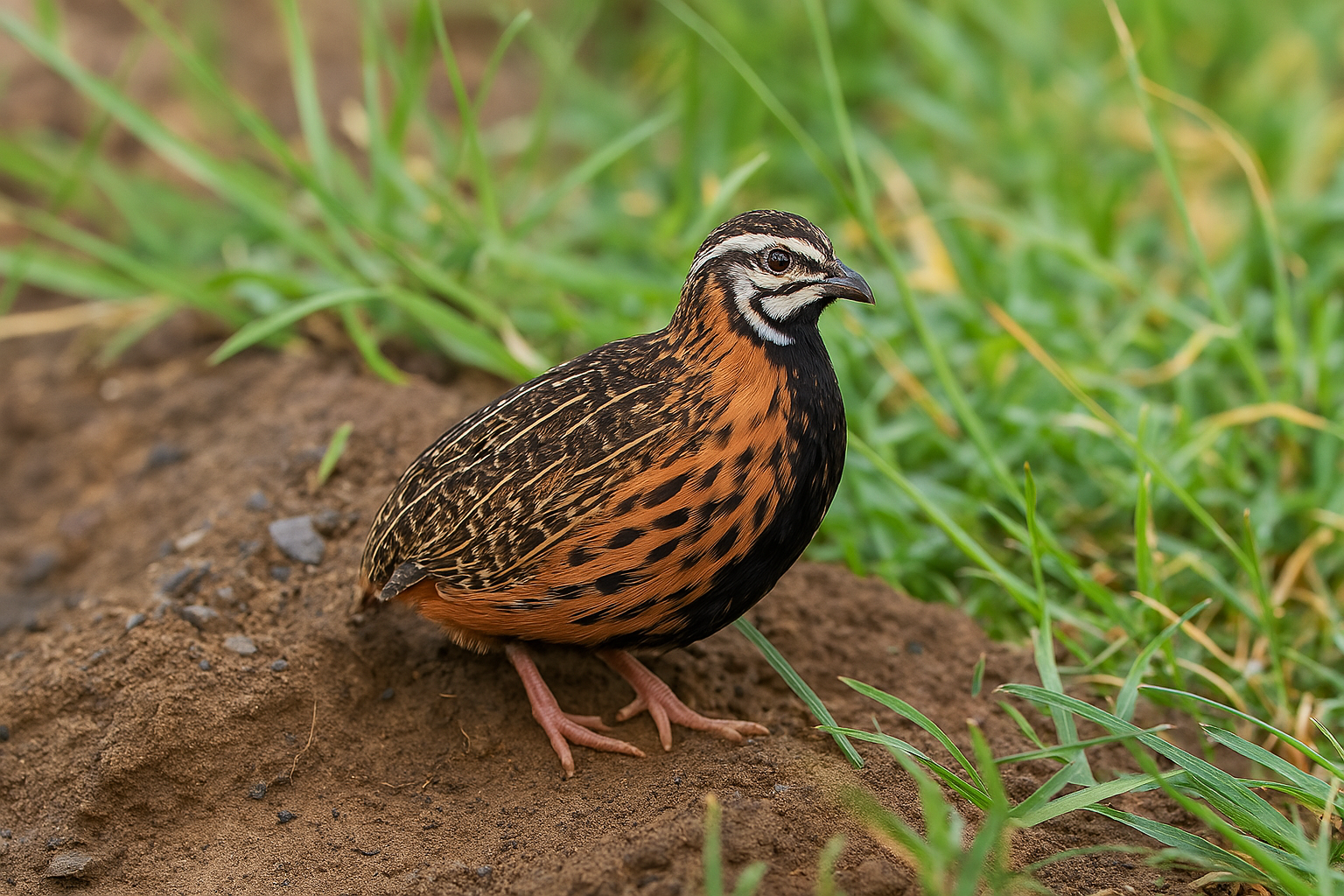
Breeding
Breeding Season
Breeding occurs during the rainy season in the wild, but in captivity, they can breed year-round with proper care.
Nesting
Harlequin Quail females typically lay between 6 to 12 eggs per clutch. A nesting area with suitable materials should be provided, and the female will lay several eggs in a shallow nest.
Quail Chick Care
Brooder Setup
Temperature: Keep the brooder at 95°F (35°C) for newly hatched Harlequin Quail chicks. Reduce the temperature by 5°F (3°C) each week until it reaches room temperature by around 6 weeks. Monitor the temperature with a thermometer and adjust based on the chicks' behavior to ensure their comfort.
Feeding
Provide a high-protein starter feed suitable for quail chicks. Ensure they have constant access to clean water.
Feeder and Waterer
Use shallow feeders and waterers to prevent chicks from drowning. Marbles or pebbles can be placed in water dishes to keep chicks safe.
Outdoor Transition
As chicks grow, start introducing them to outdoor environments gradually. Ensure they are kept in a secure area to protect them from predators and sudden weather changes.
Joining the adults
Integration with Adults
Once fully feathered and capable of maintaining their body temperature, gradually introduce the chicks to adult quails. Observe their interactions to ensure a smooth transition.
Observe Behavior
Watch for signs of aggression or bullying from the adults. If the chicks are significantly smaller or weaker, they may need more time before integration.
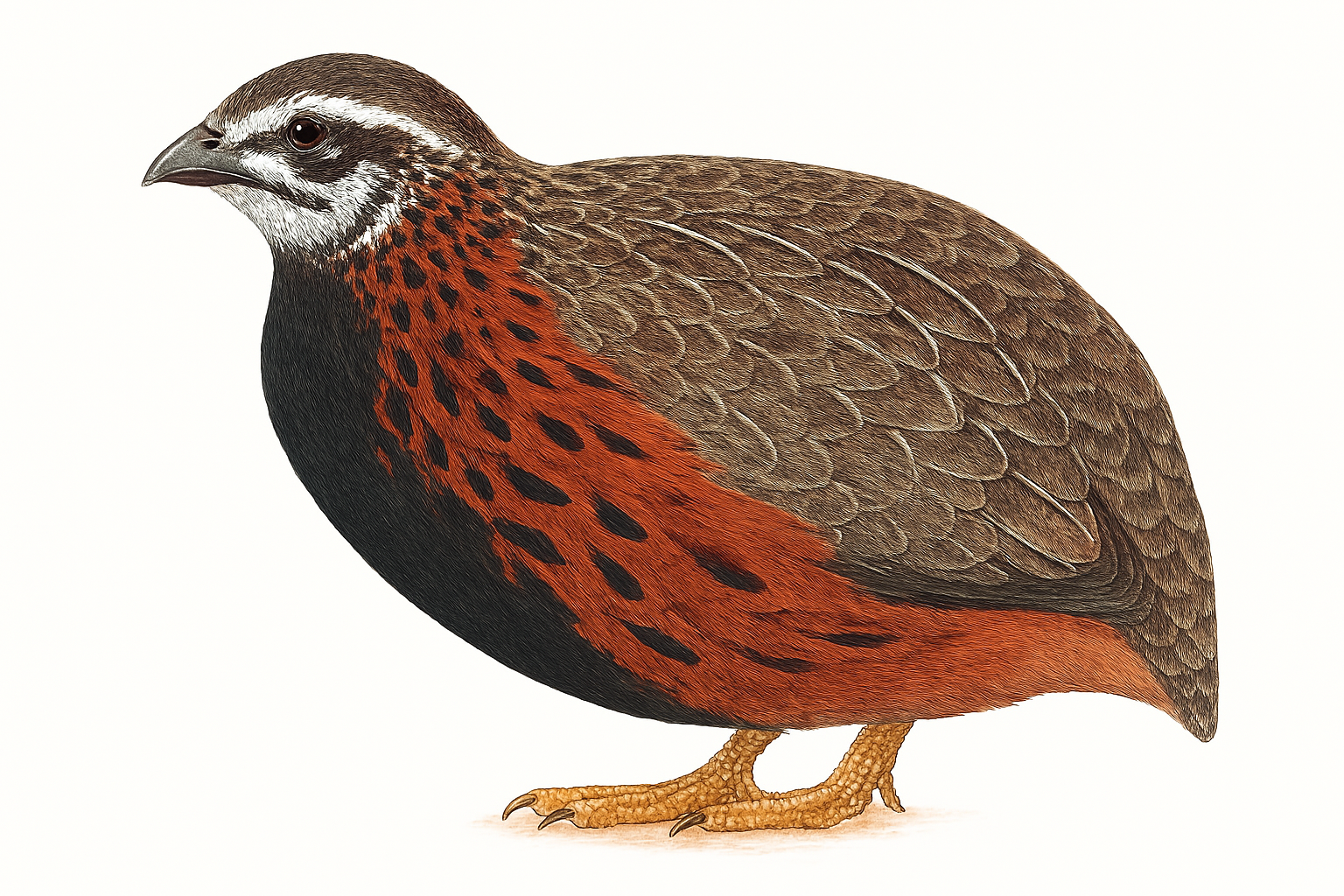
Fun Fact
Harlequin Quails have a unique feather pattern that can resemble a jigsaw puzzle, with a mix of intricate shapes and colors, making them one of the most visually striking quail species.
In this article
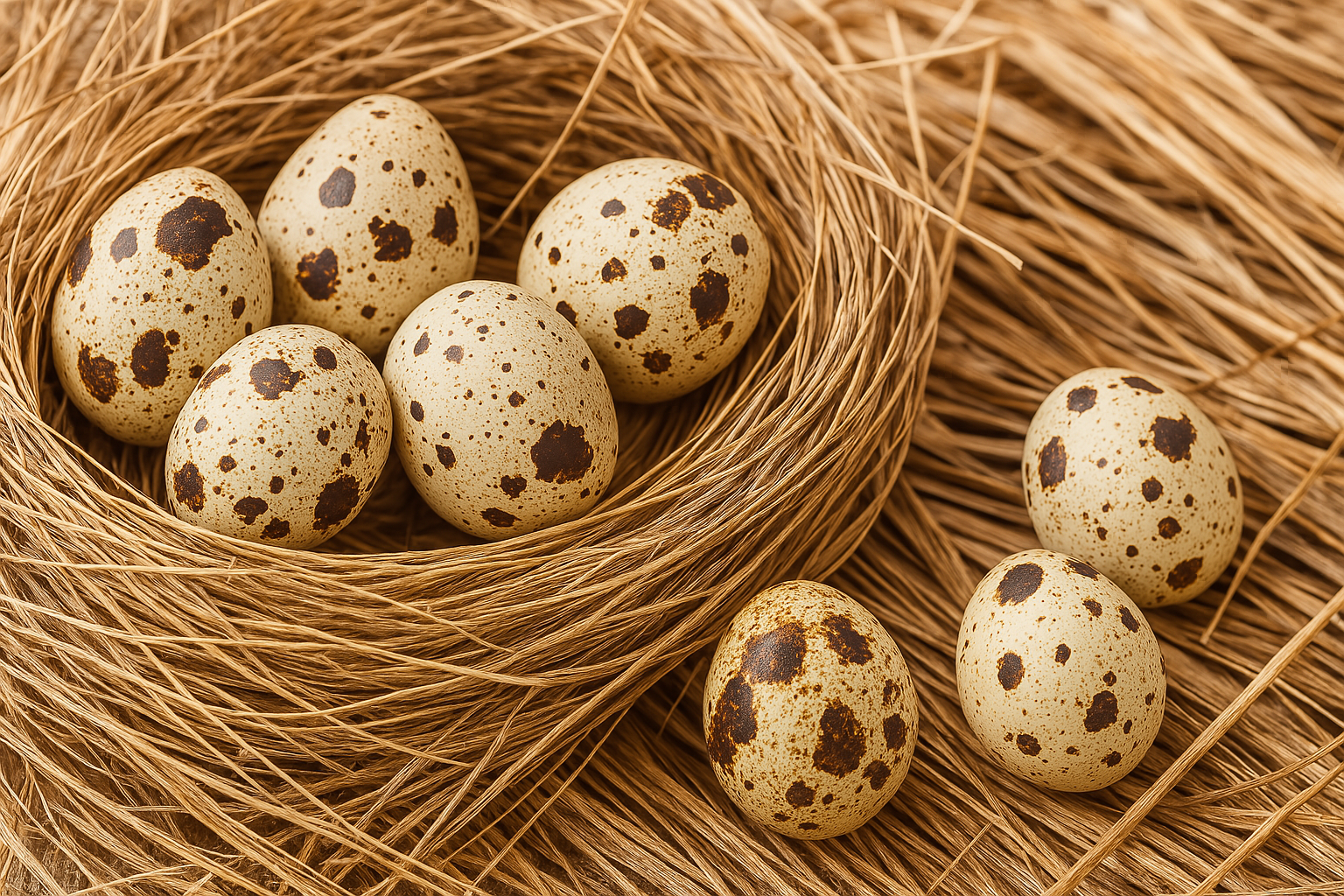
Eggs
Harlequin quail eggs are small, typically weighing around 6-8 grams, making them smaller than most domestic quail species' eggs. The shells are pale cream or light beige, often marked with irregular brown speckles or mottling that provide excellent camouflage in natural environments. Their compact size and unique patterns make them visually appealing and well-adapted for their native grassland habitats.
Legal Considerations
Check local laws and regulations regarding the keeping of quail. Some areas may have specific requirements or restrictions.
Permits
In some regions, permits may be required to keep or breed quail.

Montezuma Quail
Montezuma Quail, native to Mexico and the southwestern US, are prized for their unique, camouflaged plumage and subtle crest. These naturally shy and solitary birds are challenging to breed in captivity, and while they require careful health monitoring, their distinctive beauty appeals to experienced aviculturists.
Read more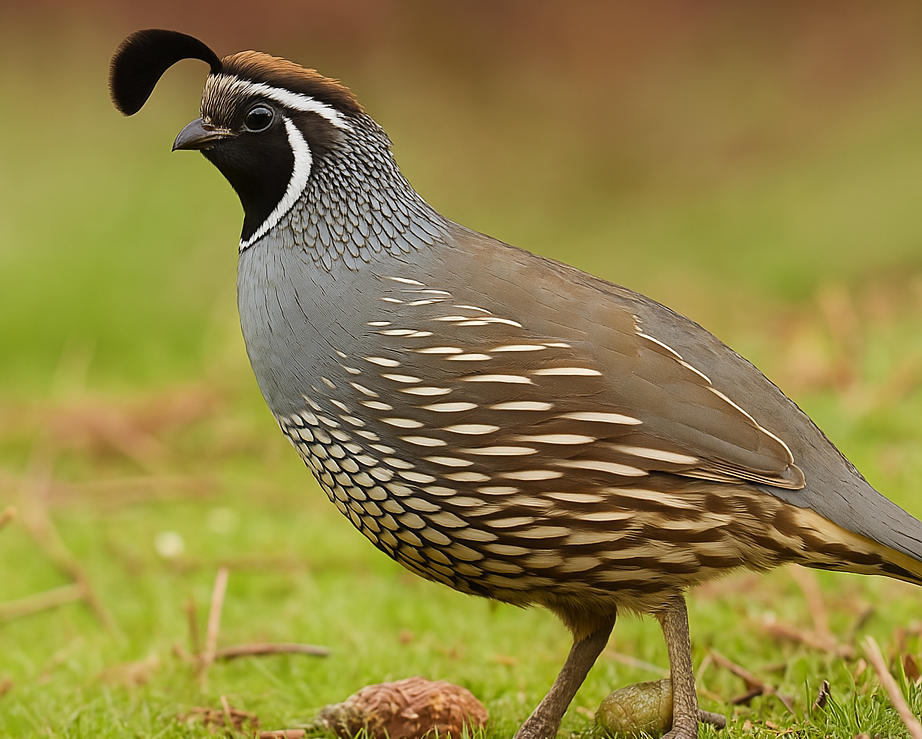
California Quail
The California Quail (Callipepla californica) is a charming and distinctive bird known for its plump body, beautiful plumage, and characteristic head plume, often referred to as a "topknot." These birds are native to the western United States but can be kept as pets with proper care and attention. Here's a comprehensive look at keeping California Quail as pets
Read more
Jumbo Celadon Quail
Jumbo Celadon Quail, also known as Coturnix quail, are a popular breed among poultry enthusiasts due to their distinctive blue or light green eggs, larger size, and efficient egg production. They are a selectively bred variety of the standard Coturnix quail, known for their increased body weight and unique egg coloration.
Read more
Bobwhite Quail
The Bobwhite Quail, also known as the Northern Bobwhite or Virginia Quail (Colinus virginianus), known for their distinctive call and charming appearance, can make unique and interesting pets. Bobwhite quail Have long been popular in North America. They require specific care and habitat conditions to thrive in a domestic setting.
Read more
Gambel's Quail
Gambel's Quail (Callipepla gambelii) are popular birds for aviculture due to their attractive appearance, distinctive calls, and relatively calm demeanor. While primarily known as wild birds, Gambel's Quail can be kept as pets under the right conditions, although they have specific care requirements.
Read more